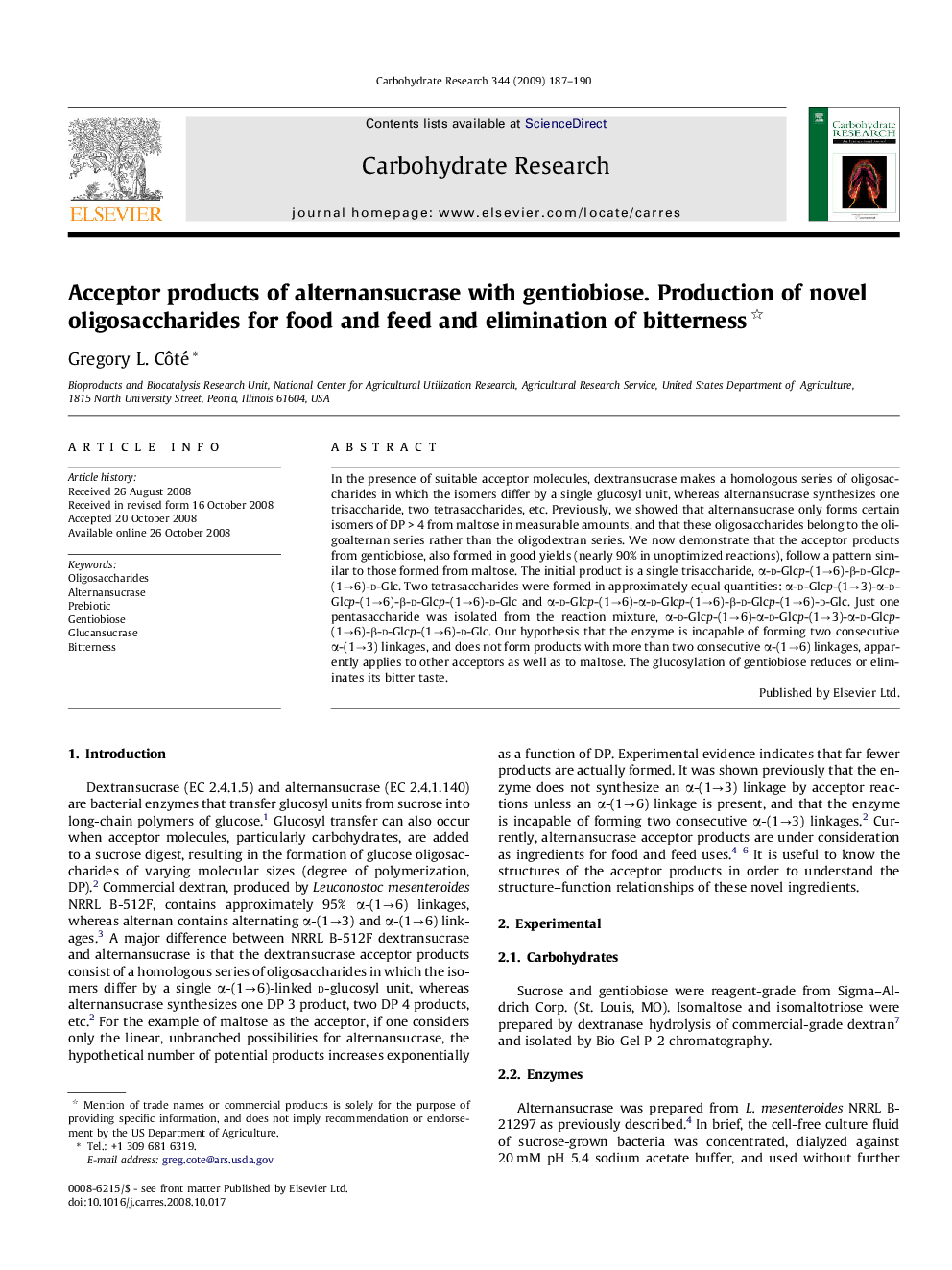| Article ID | Journal | Published Year | Pages | File Type |
|---|---|---|---|---|
| 1388938 | Carbohydrate Research | 2009 | 4 Pages |
In the presence of suitable acceptor molecules, dextransucrase makes a homologous series of oligosaccharides in which the isomers differ by a single glucosyl unit, whereas alternansucrase synthesizes one trisaccharide, two tetrasaccharides, etc. Previously, we showed that alternansucrase only forms certain isomers of DP > 4 from maltose in measurable amounts, and that these oligosaccharides belong to the oligoalternan series rather than the oligodextran series. We now demonstrate that the acceptor products from gentiobiose, also formed in good yields (nearly 90% in unoptimized reactions), follow a pattern similar to those formed from maltose. The initial product is a single trisaccharide, α-d-Glcp-(1→6)-β-d-Glcp-(1→6)-d-Glc. Two tetrasaccharides were formed in approximately equal quantities: α-d-Glcp-(1→3)-α-d-Glcp-(1→6)-β-d-Glcp-(1→6)-d-Glc and α-d-Glcp-(1→6)-α-d-Glcp-(1→6)-β-d-Glcp-(1→6)-d-Glc. Just one pentasaccharide was isolated from the reaction mixture, α-d-Glcp-(1→6)-α-d-Glcp-(1→3)-α-d-Glcp-(1→6)-β-d-Glcp-(1→6)-d-Glc. Our hypothesis that the enzyme is incapable of forming two consecutive α-(1→3) linkages, and does not form products with more than two consecutive α-(1→6) linkages, apparently applies to other acceptors as well as to maltose. The glucosylation of gentiobiose reduces or eliminates its bitter taste.
Graphical abstractFigure optionsDownload full-size imageDownload as PowerPoint slide
